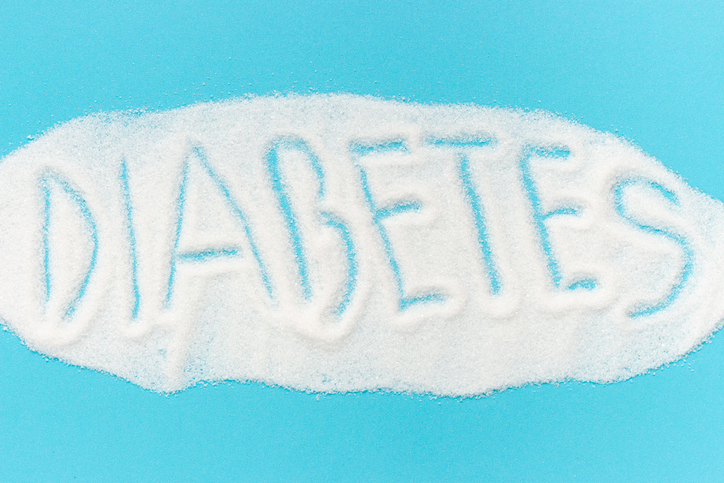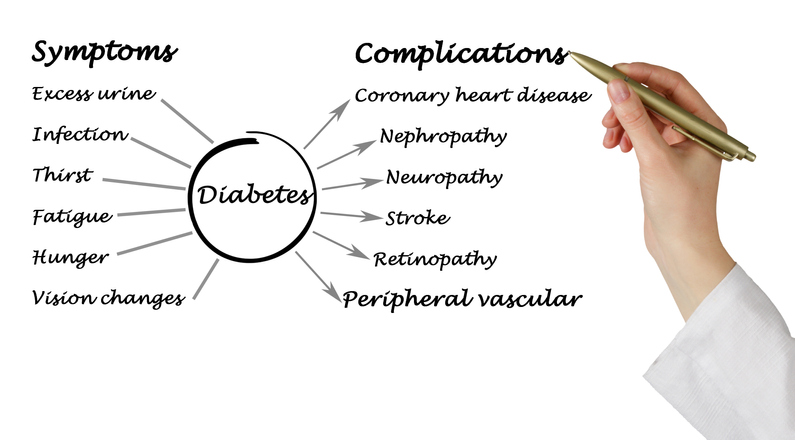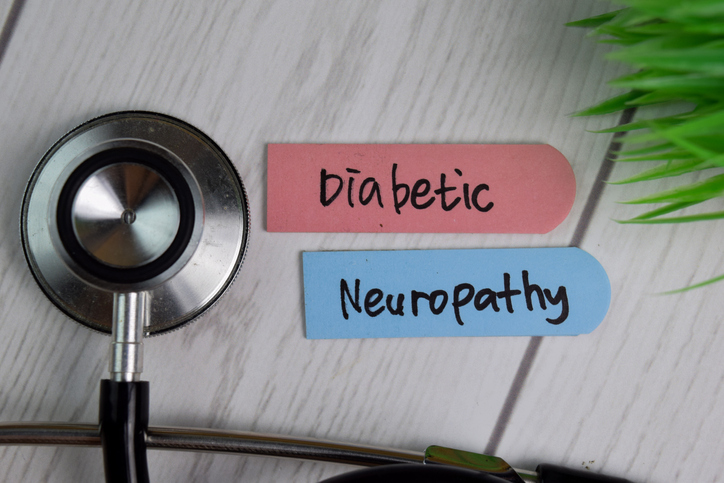Pain
Diagnosing Diabetes Mellitus (DM)

What is diabetes mellitus (DM)?
Diabetes mellitus, commonly known as diabetes, is a metabolic disease that affects the amount of glucose in the blood (blood sugar). The body breaks down food and drinks into a simple sugar called glucose. Glucose is then used by the body as a source of energy for the brain, muscle cells and tissue cells.
Diabetes mellitus occurs when the body doesn’t make enough insulin or can’t effectively use insulin. Insulin is a natural hormone produced by the pancreas; it transports glucose from the blood to the body’s cells to be stored and used for energy. When the pancreas produces little to no insulin or the cells in the body can’t effectively use insulin (insulin resistance), too much glucose remains in the bloodstream, resulting in hyperglycemia (high blood sugar).
Types
Types and subtypes of diabetes mellitus include, but are not limited to, type 1 diabetes, type 2 diabetes, prediabetes, gestational diabetes, type 3 diabetes and brittle diabetes.
Diagnosing type 1 diabetes, type 2 diabetes or prediabetes
Diagnostic tests for type 1 diabetes, type 2 diabetes and prediabetes include the following:
(Please note — mg/dL refers to milligrams per deciliter, and mmol/L refers to millimoles per liter.)
- A glycated hemoglobin (A1C) test is a blood test that averages blood glucose levels for the prior 2-3 months. Fasting is not required for an A1C test. As blood sugar levels increase, glucose attaches to an oxygen-carrying protein (hemoglobin) in red blood cells. This test measures how much blood glucose is attached to hemoglobin. A1C levels of 6.5% or higher indicate diabetes while levels between 5.7% and 6.4% indicate prediabetes. Levels of 5.6% or below are considered normal.
- A fasting blood sugar test is administered after fasting for at least eight hours. Levels of 126 mg/dL (7 mmol/L) or higher on two separate tests indicate diabetes while levels between 100 and 125 mg/dL (5.6 and 6.9 mmol/L) indicate prediabetes. Levels below 100 mg/dL (5.6 mmol/L) are considered normal.
- A random blood sugar test is a blood test that is taken at a random time, regardless of fasting. Levels that are 200 mg/dL (11.1 mmol/L) or higher indicate diabetes.
- An oral glucose tolerance test is a blood test to determine glucose levels after overnight fasting of at least eight hours. Glucose levels are tested after fasting; then, a sugary liquid is consumed, and glucose levels are periodically checked for two to three hours. Levels that are 200 mg/dL (11.1 mmol/L) or higher after two hours indicate diabetes while levels between 140 and 199 mg/dL (7.8 - 11.0 mmol/L) indicate prediabetes. Levels below 140 mg/dL (7.8 mmol/L) are considered normal.
- A urine test is usually ordered if type 1 diabetes is suspected. This test will look for autoantibodies associated with type 1 diabetes that destroy immune system cells. A urine test also checks for the presence of a byproduct that is produced when fat tissue and muscle are used for energy because the body doesn’t have enough insulin to use glucose.
Diagnosing gestational diabetes
A screening for gestational diabetes is typically done between week 24 and week 28 of pregnancy. Tests may be performed at the first prenatal visit if the pregnant female is at high risk of developing gestational diabetes. Tests for gestational diabetes include the following:
- An initial glucose challenge test involves drinking a syrupy glucose solution. Approximately one hour later, a blood test is performed to measure blood sugar levels. Although normal levels vary at specific clinics, levels below 140 mg/dL (7.8mmol/L) are generally considered normal. Blood sugar levels over 140 mg/dL indicate an increased risk of developing gestational diabetes. Additional tests may be needed to determine a diagnosis of gestational diabetes.
- A follow-up glucose tolerance test requires overnight fasting of at least eight hours. Blood sugar levels are taken prior to drinking a syrupy glucose solution that contains a higher concentration of glucose than the initial glucose challenge test. Blood sugar levels are then checked each hour for a period of three hours. If at least two of the glucose readings are higher than normal, a diagnosis of gestational diabetes is usually determined.
Diagnosing type 3 diabetes
Type 3 diabetes is a controversial diagnosis and is not yet widely accepted in the medical community. Type 3 is described as “diabetes of the brain.” The hypothesis is that Alzheimer’s disease is triggered by a type of insulin resistance in the brain.
Although there is no specific test for type 3 diabetes, the diagnostic process for Alzheimer’s disease includes, but is not limited to, the following:
- A medical history is gathered concerning family history and symptoms.
- A neurological exam involves lights and reflex hammers to evaluate the nervous system. This is typically conducted in a health care provider’s office.
- Neurophysiological testing evaluates memory, the ability to think and understand, motor function, perception and problem-solving skills.
- Imaging tests, such as MRI and CT scans of the head, help determine how the brain is working.
- Cerebrospinal fluid testing can check for indicators of Alzheimer’s disease.
- A fasting blood sugar test or glycated hemoglobin test may be ordered If symptoms of type 2 diabetes and Alzheimer’s disease exist prior to a diagnosis.
Diagnosing brittle diabetes
Brittle diabetes is a medical term used to describe diabetes mellitus that is difficult to control. It is characterized by blood sugar levels that quickly fluctuate from too high (hyperglycemia) to too low (hypoglycemia). No specific test is available to diagnose brittle diabetes; it is detected when diabetes is difficult to manage even with proper treatment.


















